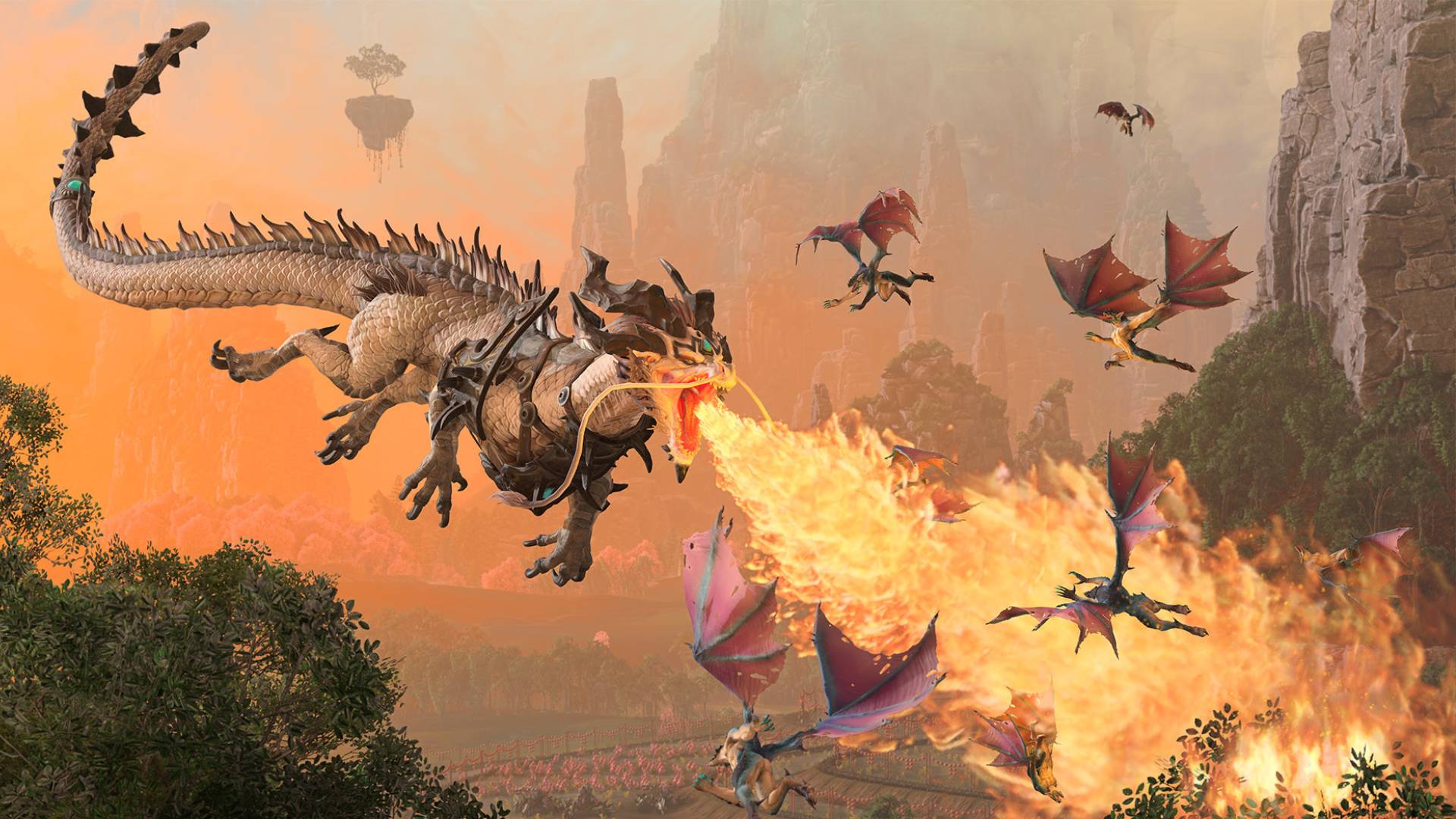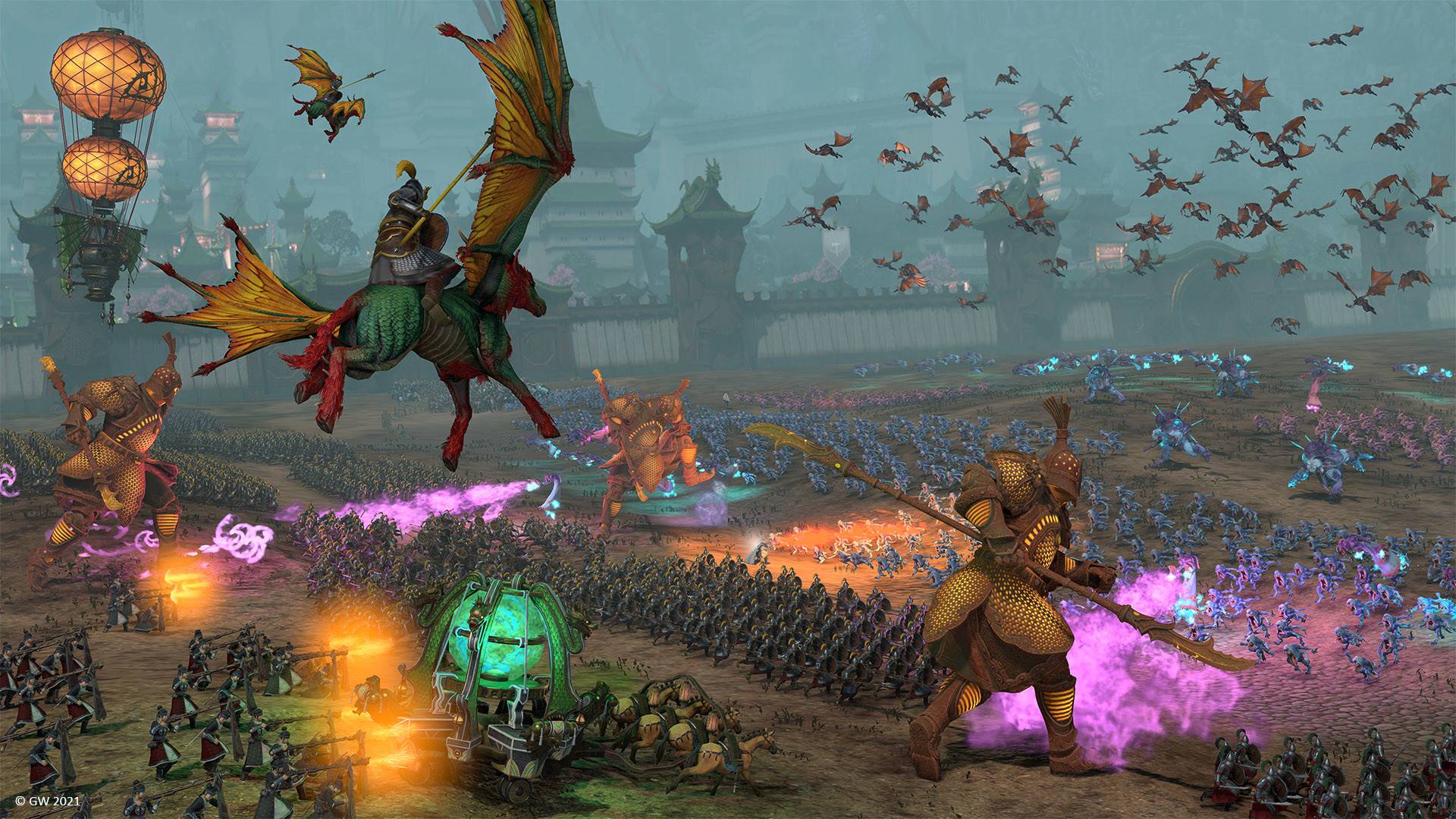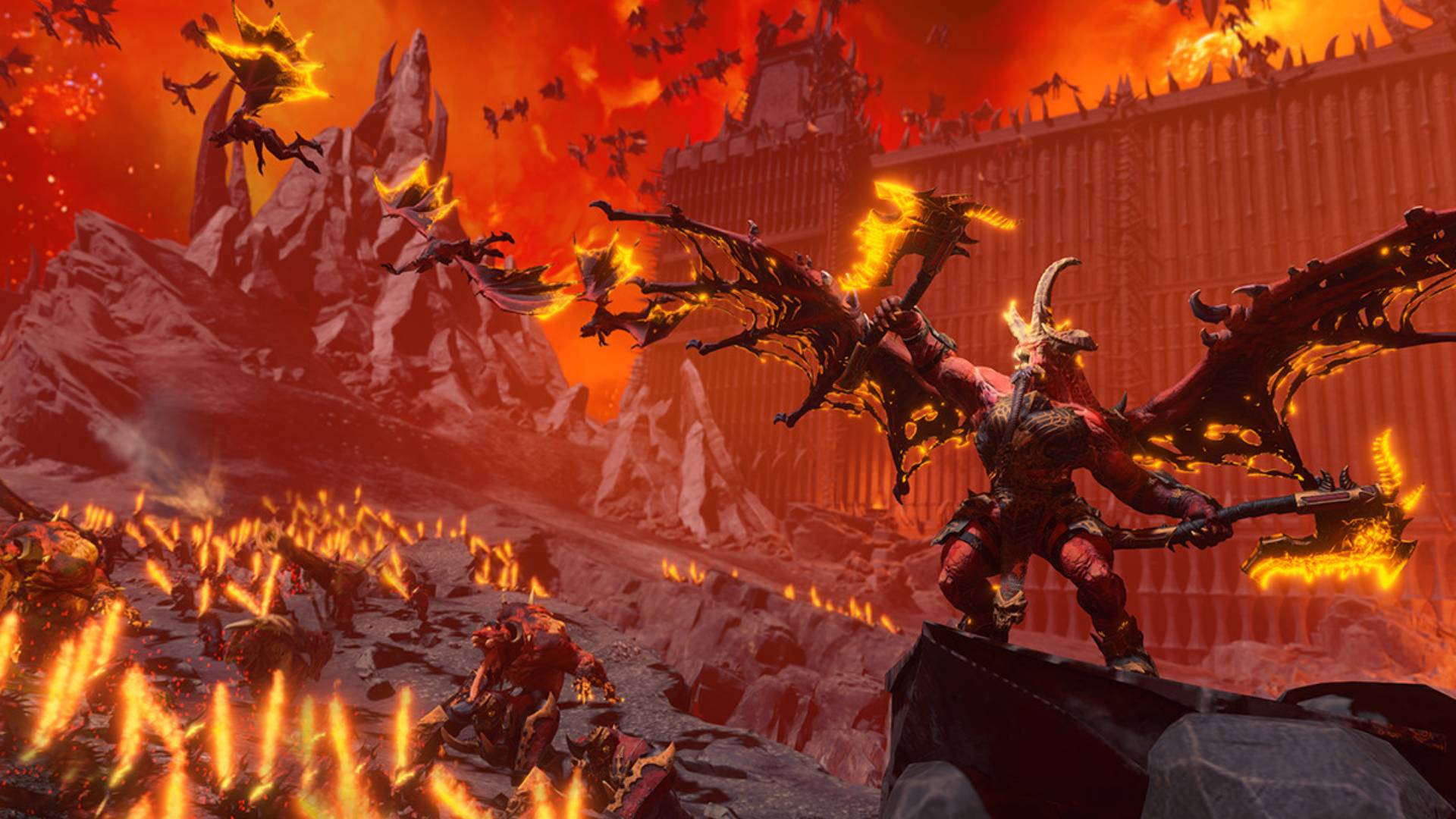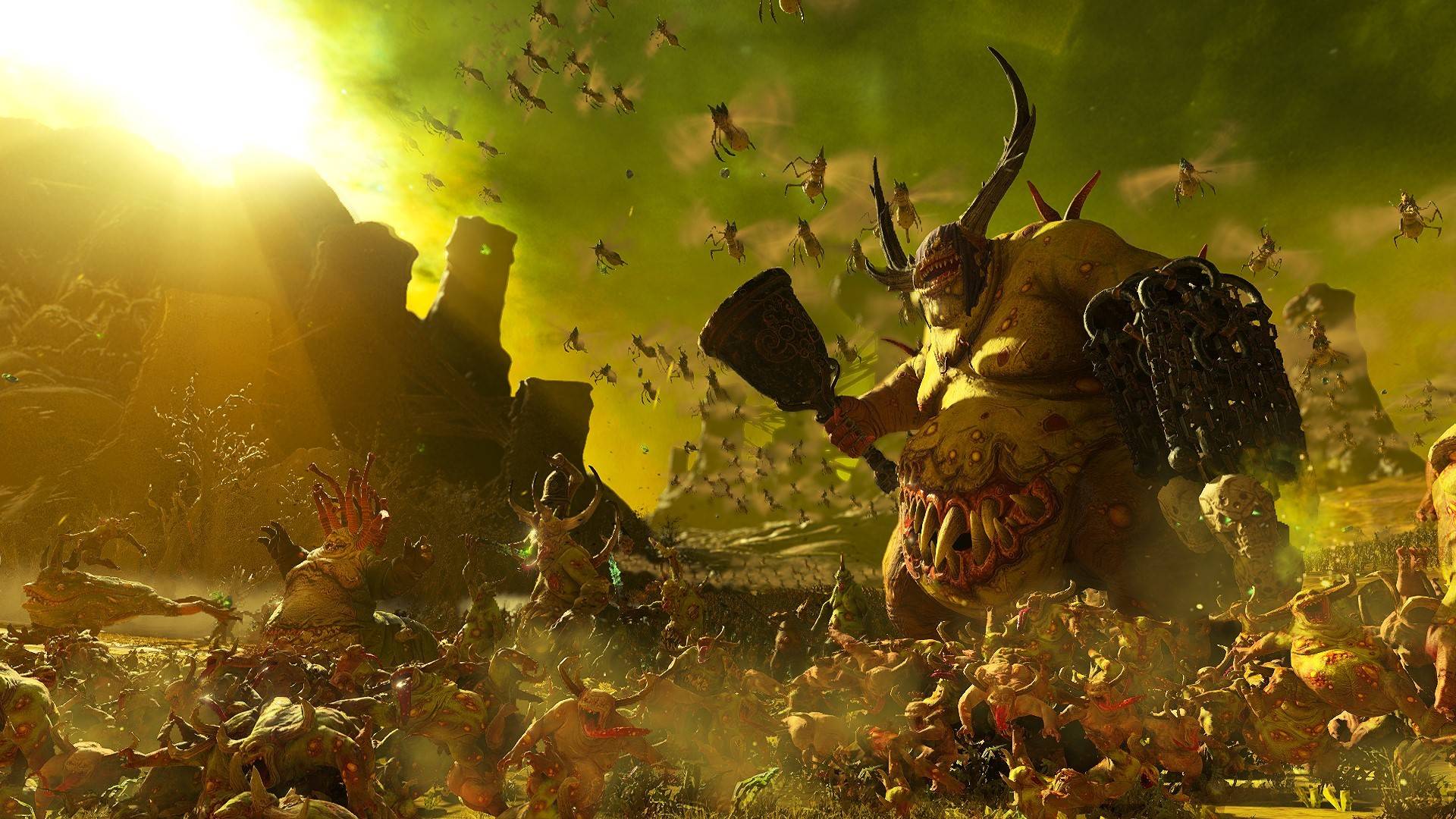How to make a Warhammer game "on a scale unlike anything seen in the genre"
Total headache

Few games live up to the moniker of grand strategy the way the Total War series does, and almost none approach the dizzying scale of Immortal Empires, the ambitious and sprawling expansion for Total War: Warhammer 3. Immortal Empires presents the entire world of the Warhammer fantasy tabletop game, a globe roughly analogous in geography to our earth but teeming with countless fantasy races, factions, and mythical creatures.
While the base games of the Total War: Warhammer franchise, such as Total War: Warhammer 3, gives you smaller, curated slices of the world with a handful of factions to wage your wars of conquest, Immortal Empires opens up the entire map and all the content of the three titles stretching back to 2016. It also includes all three games’ DLC content and the Immortal Empires precursor, Mortal Empires. It’s a staggering undertaking, the culmination of many years of work, planning, and iteration.
We wanted to do what no one else had done – to recreate the vast Warhammer world
Mitchell Heastie
“From the very beginning of pre-production on the series, we knew that we wanted to do what no one else had done – to recreate the vast Warhammer world,” lead game designer on the Total War: Warhammer series Mitchell Heastie says. “Given the absolute wealth of content needed to deliver that vision, we knew that the game would have to be released as a trilogy to do it justice.”
Eventually, the project's scope grew beyond even the core trilogy of games, spawning the Mortal Empires expansion. Released as an expansion for the second game, it was an attempt to combine all of the content of both titles on a single map that spanned the Old World and New World of the Warhammer fantasy setting. Asan area roughly corresponding to Europe and northern Africa across the Atlantic to North America and parts of South America, as well as an Atlantis-like island realm in the middle of the ocean, it was quite the feat.
Total skirmish

It was a “scaled-down version of their ultimate vision,” Heastie says, and the development process taught his team many valuable lessons that would eventually translate into the follow-up. Perhaps most important lesson was to design content with the future in mind.
“One of the biggest hurdles we encountered when creating Mortal Empires was that it was incredibly difficult to add in new content and move old content due to the complexity of the systems,” Heastie says. “For Immortal Empires, we remedied this by stripping back anything that would lock content in a specific spot. It allowed us much greater flexibility to move characters around the map as the content expands, rewrite victory conditions as the map changes, and better plan for future content delivery.”
A secondary challenge arose from the sheer size of the maps presented in Mortal and Immortal Empires. Heastie’s team discovered that players often only saw a small portion of the map in a given campaign, so to ensure a rich and varied experience, they had to rethink how they presented the content.
Get daily insight, inspiration and deals in your inbox
Sign up for breaking news, reviews, opinion, top tech deals, and more.
We had to break the map into ‘theatres of war’ – We ran thousands of simulations on every theatre
Mitchell Heastie
“In Mortal Empires, we built a lot of the systems around the assumption players would end up conquering at least half the map,” Heastie says, “and as such we designed systems like victory conditions with that in mind. However, in practice, that didn’t happen often, so we had to break the map into ‘theatres of war’ – a portion of the map where certain factions would vie for dominance.”
Subdividing the map in this way meant that even if you focused entirely on your local region, you still experience a microcosm of the vast Immortal Empires experience. It means multiple varied kingdoms vying for control in a dynamic, interesting way while global events and conflicts churn on in the background and influence the balance of power. “We ran thousands of simulations on every theatre to ensure they met our expectations, but even now, they occasionally surprise us.”
Finding balance

Balancing everything is one of the most difficult design problems of a project this big with this many playable factions. According to Heastie, “we currently have 23 different races, 86 Legendary Lords, hundreds of units, spells, mounts, and items, and that number is only going to increase.” It’s a massive amount of content that all has to interact in a smooth, predictable, and fair way, not only in a set state like the beginning of a campaign but across many years as borders shift and factions unlock more powerful options.
We had to evaluate mechanics and features from the older races to ensure they’d be capable of competing within this new environment
Mitchell Heastie
On top of the sheer number of moving pieces, many factions also include unique mechanics. The high elves, for instance, have a resource called Influence they spend to recruit characters or manipulate diplomacy, while the rat-like Skaven traverse the world through secret underground passages, infesting ruined cities without the knowledge of their enemies. Balancing all of these factions and units and accounting for the unique flavor of each race was one of the steepest challenges in developing Immortal Empires.
“We had to go back and evaluate mechanics and features from the older races to ensure they’d be capable of competing within this new environment,” Heastie says. “This led to us making significant updates to the likes of the Lizardmen, Vampire Counts, Norsca, and the Dark Elves, whilst the Warriors of Chaos received a full rework that dramatically changed their playstyle.”
There were also serious technical hurdles to overcome. Content from three separate games was lumped into a single expansion, and a lot had changed since the original Total War: Warhammer’s release in 2016.
“New features and improvements such as simultaneous multiplayer, alliances, and our new lighting system might not seem that radical, but they all required us to approach the design of the mode with added precision.” Engine improvements and new features all meant evaluating all the old content in a new light to ensure that it would fit neatly into the convoluted framework of this massive expansion.
It’s a huge undertaking, and the fact it doesn’t collapse under the preponderance of its ambition but runs well and is a joy to play is a testament to the passion of the team at Creative Assembly.

“Ultimately, the team just wanted to create a great strategy game experience that encompassed the whole Warhammer world and was on a scale unlike anything seen in the genre,” Heastie says. “We’re all just huge Warhammer fans – if you were to visit the Horsham office, you’d see countless dioramas and cabinets crammed with miniatures that the team’s created over the years.”
Just as the original Mortal Empires continued to be supported and refined for many years, Heastie promises Immortal Empires will enjoy a long tail and continue to evolve and improve for a long time to come.
“We’re in the process of delivering our 2.2 patch, changing things like the number of settlement battles you have to play, AI improvements, and some new end-game crises that will add to the overall level of customization. Beyond that, we have years more content to add to Warhammer 3, and Immortal Empires will only continue to become a richer overall experience.”